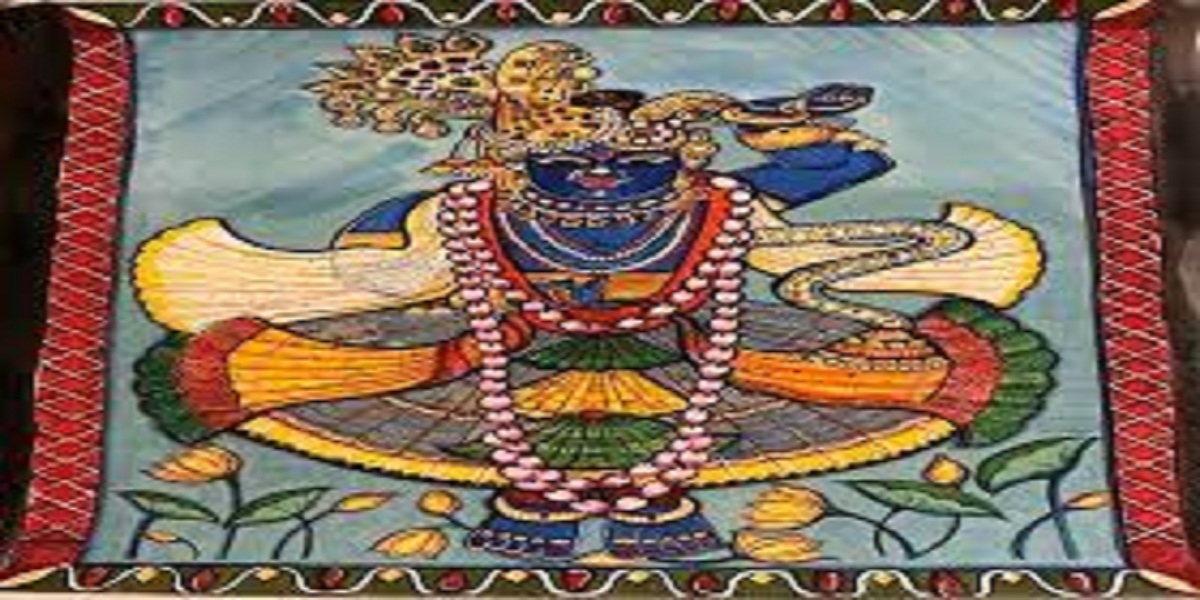Contents
Traditional art has been passed down through the years, provides a shared experience for the entire community. Because these art forms incorporate values, cultural practices, and belief systems, they frequently serve as a common language through which the various communities that makeup society can communicate.
For thousands of years, folk art has been a component of India’s culture. Every region of the country has had its own artistic traditions, ranging from prehistoric cave paintings in the rock shelters of Bhimbetka to intricate wall art of Madhubani from the time of Ramayana, on to elaborate frescoes in the rock-cut artificial caves at Ajanta and Ellora, extending as late as the 10th – 12th century. These Indian traditional paintings progressed from simple portrayals of Mother Nature — trees, birds, animals, and man — to deities, human body detailed representations of the universe — sun, moon, and other spiritual notions.
Traditional art forms moved canvases from cave walls, dwellings, and temples to palm leaves and eventually handmade paper, influenced by the symbology of the divine gods, the elements of the universe, and religious and ethnic customs. New tools and painting techniques evolved over time, adapting to new discoveries while keeping the ethos and traditions of folk art.
Traditional Art
The numerous folk art traditions of this ethnically diverse country are more than just an important element of its culture; they are the foundation of its rich legacy. These folk paintings offer a link to India’s rich past and different customs, reflecting the unique traits and collective stories of communities.
As a result, it plays an important role in preserving the country’s personal and cultural identity. On a personal level, Indian traditional paintings give a focal point to which its people may always return — whether to learn more about their ancestors or simply to strengthen their bonds with their communities. They are rooted in long-standing rich traditions and culture, but they also offer a lot of promise for modernization, providing a rich source of inspiration and knowledge.
Indian traditional art styles have been rich in symbolism, depicting the symbology of the epics, gods, cosmology, mathematics, the universe, and Ayurveda and the human body. The planets, flora and fauna, mandalas, swastikas, and many other symbols, along with the deities’ individual forms, postures, and mudras, made these traditional folk paintings rich and vibrant. Shunya, the Om, mandalas, mythological events, and the Panchatantra and Jataka Tales are all popular symbols that painters have included in their works.
Finally, traditional Indian arts have a global economic value that extends beyond their personal and national significance. Traditional arts are an important component that helps to develop a distinctive identity of the country incorporating the various cultures practiced here, as global cities are distinguished not only by their economic status but also by their cultural richness and liveliness.
India’s Popular Traditional Arts
India’s folk arts are a reflection of the country’s many civilizations, and each one is distinct and distinct in its own right. Despite the fact that many of them have adapted to the new technologies, materials, and sensitivities of the time, they have maintained the beauty and ethos of the period. The following are some of India’s most popular and thriving folk arts that have withstood the test of time.
Madhubani Traditional Art
Madhubani paintings, also known as Mithila art, are thought to date back to the Hindu epic Ramayana. It is claimed to have originated in the Mithila region of Bihar, in the kingdom of Janaka, Sita’s father.
This art genre, which is characterized by geometric patterns, shows gods, wedding scenes, religious rites, flora, and fauna. Women commonly use these artworks to cultivate their spirituality and desire to be one with the divine.
Traditionally, the artists have used mineral pigments and freshly drawn plastered mud walls. While these paintings have been produced for commercial purposes- they have also been achieved on paper, cloth, and canvas. This art form is still practiced in the Mithila region as a symbol of tribute. The tribute to the original women who developed the techniques for such beautiful wall paintings.
Warli Paintings
Warli painting, one of the oldest Indian traditional art forms, originated in the tribal region on the outskirts of Mumbai, Western India. Despite its proximity to one of India’s greatest metropolitan centers, this art form rejects any urban influences.
Warli tribal art is simple in design and uses geometric structures such as circles, triangles, and squares to reflect the Warli tribe’s daily lives and social occasions. Despite its similarities to Madhubani paintings, it is distinguished by the use of a red ochre or black background and white forms.
These geometric murals, which were customarily created in the Warlis’ dwellings to invoke the gods, are reminiscent of prehistoric cave paintings. They have acted as a means of passing down stories and customs to a population that was not familiar with the written word over time. Warli paintings on paper and fabrics are currently quite popular all over the world.
Wrap up:
Traditional Indian art forms, however unique to a particular region, have gradually garnered a global reputation, not just in India but throughout the world. These Indian traditional paintings and various other contemporary art paintings are an artistic window into understanding ancient society and a perfect tool for learning about the past.

